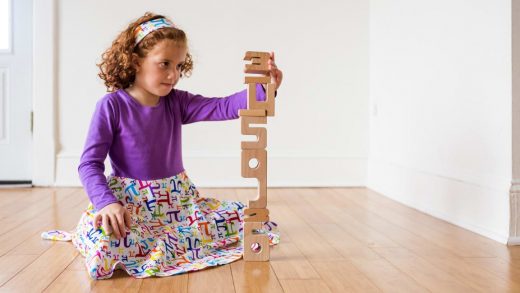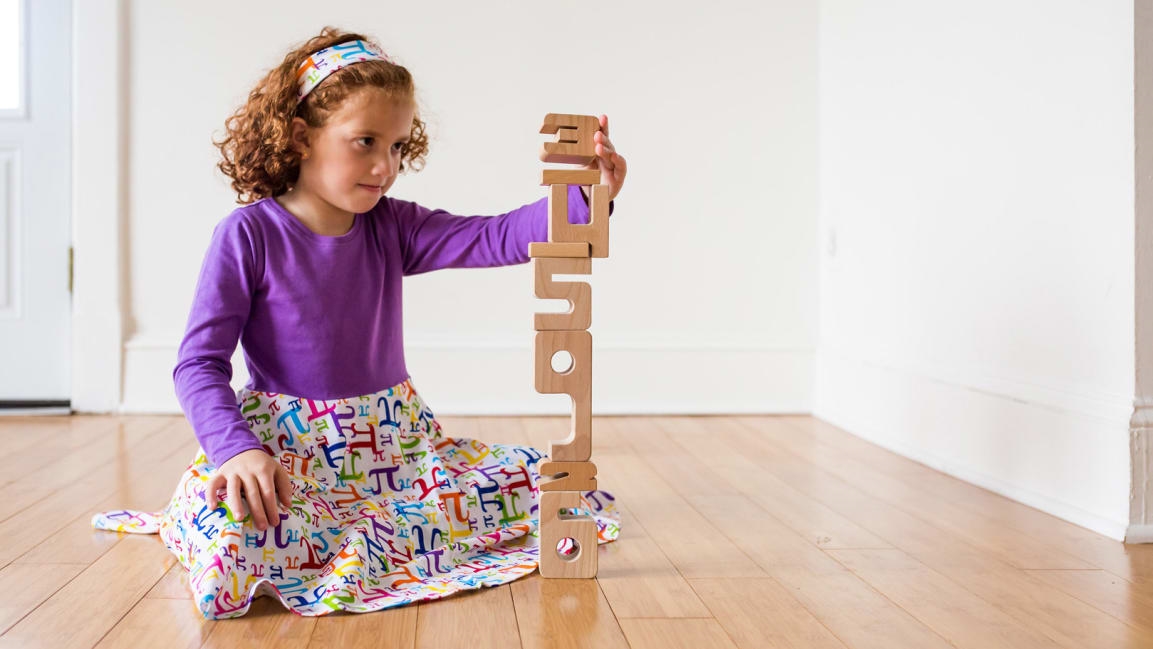Move over, princesses. These girls’ clothing brands glorify science
As the mother of a 4-year-old girl—as well as a card-carrying feminist with a PhD in women’s studies—I find myself struggling with exactly what it means to raise a daughter in 2020.
When Ella was born, my husband and I wanted to make her feel free from the entrenched gender stereotypes about what men and women can do in life: We want her to pursue any career she chooses, marry whomever she wants (or not marry at all), and confidently take on any challenge that come her way. We tried to fill her life with gender-neutral products: We outfitted her room with gray furniture, dressed her in unisex clothes from brands like Primary, and bought toys plucked from both the boys and girls aisles, including train sets, tea sets, and plenty of blocks.
Despite these efforts, Ella is perhaps the girliest 4-year-old you will ever meet. My husband and I often stare at her, perplexed, wondering what went wrong. The child refuses to go out without her tiara and sparkly magic wand. She won’t wear pants, or any color besides pink and purple. We want to support Ella’s choices and interests: We got her the fairy princess costume she wanted for Halloween. But we do worry that she may be buying into harmful stereotypes about gender, which have been well-researched and documented. These include the idea that girls aren’t inherently good at math and science, or that being perceived as pretty is very important, or that girls with leadership abilities are considered bossy. It’s a little worrisome that she chooses to pretend to be a bride or a pregnant woman during dress-up time in school, when the boys would rather be astronauts and doctors.
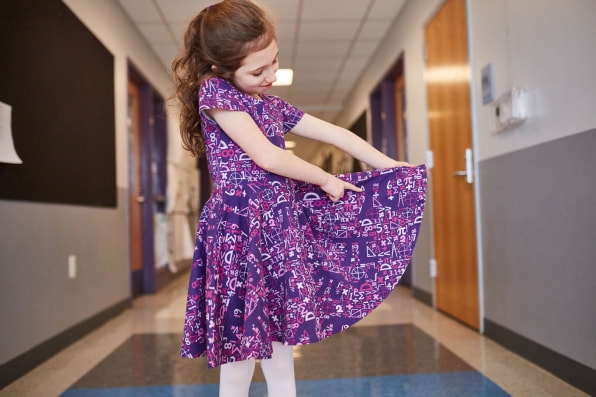
[Photo: courtesy Princess Awesome]
What’s a mom like me to do? Well, the good news is that several clothing brands targeted at girls from the time they are born until they’re in their early teens are helping parents navigate some of these challenges. Three new startups—Piccolina, Princess Awesome, and Annie the Brave—are focused on designing clothes that appeal to the aesthetic of girls like Ella, featuring lots of pastel colors, twirly skirts, and sparkles. But rather than featuring images of princesses or unicorns, these collections are covered in motifs relating to science, technology, engineering, and math.
Our culture is saturated with stereotypes about gender, showing up in everything from toys to advertising to TV shows. And clothing is an obvious way for children to engage with these gender norms directly. As any parent will tell you, kids love the empowerment that comes with picking their own outfits. This is an early way for them to express their identities, nascent as they might be. For many girls, the options for expressing their personality tend to cluster around themes like princesses, ballerinas, and unicorns.
Interestingly, these new brands don’t shy away from stereotypically feminine colors and silhouettes, but at the same time, they are trying to change the definition of what femininity stands for. Through design, these garments are meant to communicate that girls can love tutus but also aspire to build tomorrow’s technology; they can wear pink from head to toe and also aspire to be president.
This mirrors another trend that I’ve covered in the world of political dress, in which female politicians no longer wear masculine suits, but instead choose to wear more feminine colors and silhouettes, making the case that it is possible to look feminine and also be powerful. “The fact that colors and patterns are branded feminine is not inherently problematic,” says Heide Iravani, the founder of Piccolina. “The problem is that society has tied feminine symbols to ideas about what women can and can’t do. But we can change that by showing girls that they can be feminine, if they choose, but also be and do anything they want.”
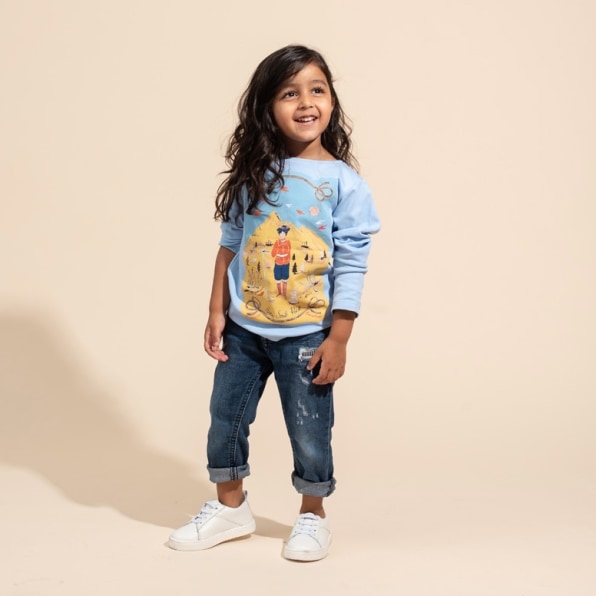
Piccolina
Heide Iravani, a Yale-educated lawyer, decided to quit her job in the tech sector a year ago to start a lifestyle brand for girls focused on STEM called Piccolina. It was a big career switch, but Iravani was passionate about the need for better girls’ clothing. When she became a mother, she observed how different it was to dress her daughter than it was to dress her two sons. “It’s more than just that girls’ clothes are pink and boys’ are blue,” says Iravani. “It’s also that boys clothing tends to feature images related to science—like trains, planes, and dinosaurs—which helps them shape their career aspirations. Girls clothing tends to feature motifs that have no inherent purpose other than to be beautiful, like flowers, and polka dots, and rainbows.”
Before launching Piccolina’s first collection, Iravani launched a small capsule collection timed with the International Day of the Girl in October 2019. It included 13 long-sleeve T-shirts that cost $28 a piece. Each featured a trailblazing woman, including the artist Frida Kahlo, the social justice activist Malala Yusofsai, and the astronaut Mae Jamison. Each of these shirts is beautifully illustrated and comes in palettes of pink, purple, orange, and teal. (Ella, for instance, gravitated to the Amelia Earhart T-shirt with a largely pink palette.) The shirts were an immediate hit, with hundreds of parents buying them within a week of launching. “The response was overwhelming,” Iravani says. “It made me realize there was a big market for more thoughtful girls’ clothing.”
Iravani is getting ready to launch Piccolina’s first collection, which is currently in pre-orders, but is slated to ship starting March 15. It features plenty of girly silhouettes like ruffle tank tops, twirly skirts, and dresses, all featuring themes like construction, aviation, and paleontology. Over time, Iravani wants to expand beyond clothes into accessories like bags and umbrellas, and sheets and pillows. “It’s not just clothes that reinforce these stereotypes,” says Iravani. “We see this in many product categories for girls. My goal is to create a lifestyle brand that extends into every aspect of a girl’s childhood.”
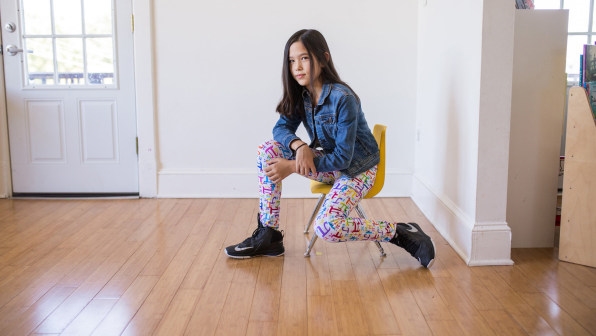
Princess Awesome & Boy Wonder
Princess Awesome was founded in 2013 by two mothers, Eva St. Clair and Rebecca Melsky, who were tired of what they saw in the girls’ clothing aisle. For one thing, they found girls’ clothes impractical and devoid of basic features like pockets, but they also didn’t like how the outfits rarely included images related to math and science. So they began creating outfits that tackled both problems. They designed twirly dresses, skirts, and leggings with pockets, splashed with images of test tubes and mathematical equations. For Pi Day last March, for instance, the brand launched a collection that featured pink Pi symbols on a purple background. Much like Piccolina, the outfits are designed to catch a girl’s eye, but also spark her interest in STEM. (And in keeping with the popular “mommy and me” trend, Princess Awesome has some adults dresses and scarves that match the girls’ looks.)
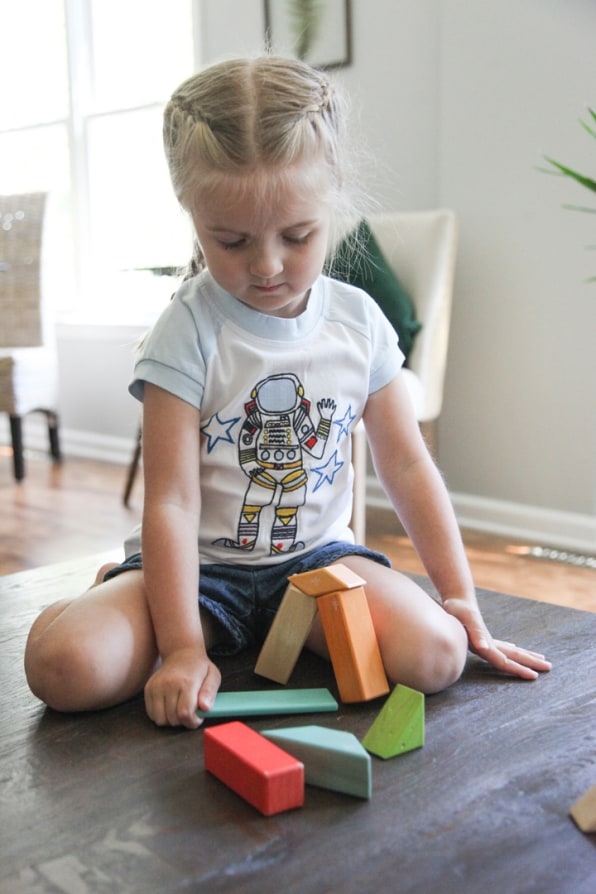
In an important twist, the brand recently launched a boys’ collection called Boy Wonder. As they grew Princess Awesome, St. Clair and Melksy discovered that there was a gap in the boys’ clothing market, much like there was for girls. Some boys, for instance, want to wear clothes that feature rainbow, sparkles, and unicorns, but these images are rarely available in clothes meant for boys. So Boy Wonder fills this gap by creating clothes that still read as masculine, but feature these themes. One blue shirt, for instance, has motifs of unicorns and rainbows. A pair of jogger pants features the solar system, but also has a layer of glitter on it.
The two brands—Princess Awesome and Boy Wonder—acknowledge that kids grow up in a gendered world and many feel comfortable wearing clothes that reflect this simple gender dynamic. But the brands also gently challenge these norms, helping kids understand that gender is actually more fluid than it might seem.
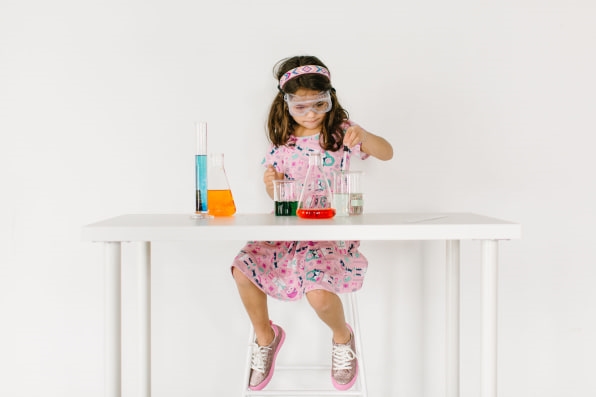
Annie the Brave
Much like the other two brands, Annie the Brave was founded by a mother who was frustrated with her options. Chelsea Coulston, the mother of two girls, was upset when one of her daughters requested a dress with scientists on it, and she couldn’t find anything on the market. She ended up doing a DIY project where she located fabric with the right motif on it and made the dress herself. That’s when she decided she could create a business out of this idea and launched last spring.
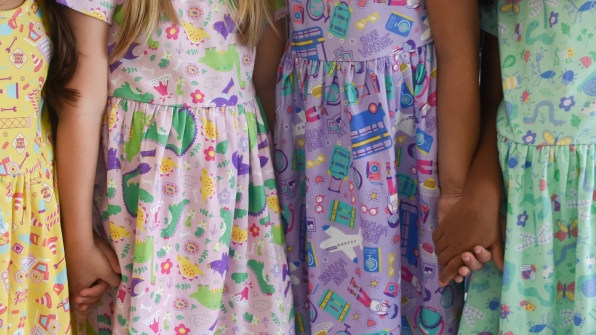
Annie the Brave is the smallest of these three brands, with a selection of seven dresses that cost $35 a pop and feature themes like under the sea, insects, and, of course, scientists. The brand is still new and will expand its line over time.
For now, parents have more options than ever when it comes to finding clothes that might pique their daughters’ interest in becoming a research scientist or paleontologist or entomologist or a mathematician. Of course, clothes can only go so far: We need toys, books, and televisions shows to make and reinforce this point. But at the same time, clothes have the power to inspire confidence and help girls situate themselves in the world. And these brands want to make sure that the girls wearing their clothes will grow up with the message that they can wear whatever they damn choose while they’re doing these jobs. In Ella’s case, she will most certainly be wearing a tutu as she builds intergalactic spacecraft.
(30)

